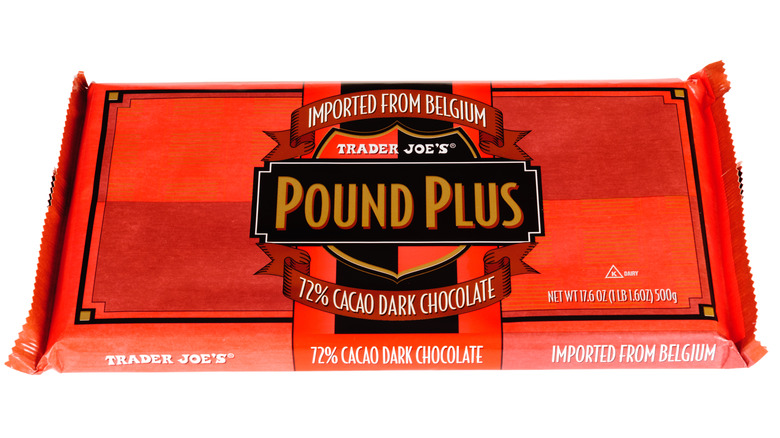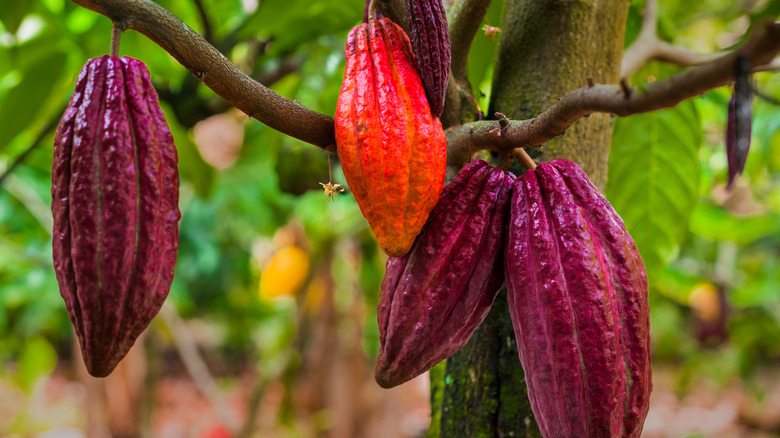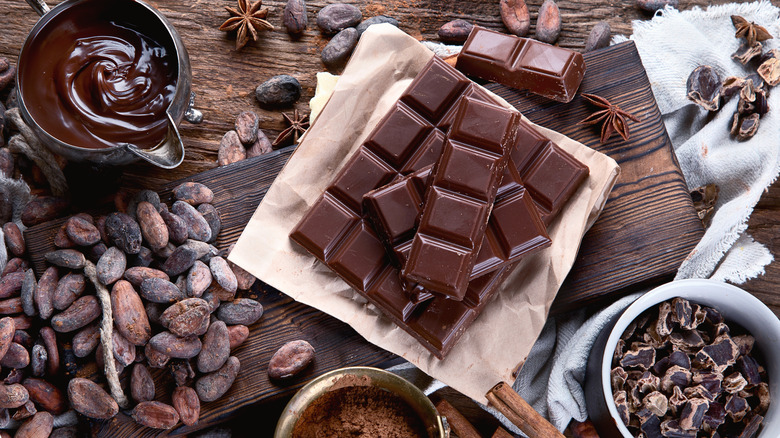A Class Action Investigation Is Coming For Trader Joe's After Dark Chocolate Scandal
Trader Joe's is the focus of a new class action investigation aimed at its chocolate bars. The grocery store is being accused of knowingly selling chocolate bars that contain dangerous amounts of the toxic heavy metals cadmium and lead.
This action, led by the law firm Schubert Jonckheer & Kolbe, follows the shocking discoveries made in 2022 following a Consumer Reports investigation into many popular chocolates. It found that an adult consuming just one ounce of the problematic candy would ingest a dangerous level of the heavy metals. Since there is no federal guidance on the maximum allowable dose level in chocolate, Consumer Reports utilized the standards set in place in California which, per ounce, is 0.5 micrograms of lead and 4.1 micrograms of cadmium.
The Trader Joe's Dark Chocolate 72% Cacao bar was found to have 192% of the permissible quantity of lead, while the Trader Joe's Dark Chocolate Lover's Chocolate 85% Cacao bar had both 127% of the allowable amount of lead and 229% the allowable amount of cadmium. This is not even the first time Trader Joe's is being sued for a scary reason. In 2021, several frozen items were found to have remarkably high levels of lead.
How did those toxic heavy metals get into the chocolate?
The good news is that Trader Joe's did not just dump a bunch of toxic additives into its chocolate. Researchers at the organization As You Sow studied how these metals end up in the chocolate, and found that in areas with contaminated soil, cadmium is absorbed into the cacao tree, and eventually, gets into the cacao beans. This is how most foods become laden with heavy metals. As for the lead, this was mostly found on the outer shell of the beans, not inside the beans themselves. This shows that the beans were not absorbing the lead in the soil during their growth, but were instead being contaminated by lead-filled dust coating their shells as they were left out to dry.
This can be solved with some attention to detail and creativity. Breeding cacao plants to absorb less cadmium could help, and so could replacing older trees with newer trees since cadmium builds up in the plant over time. As for the lead, better protecting the beans during the drying process would decrease the amount of lead they are coming in contact with.
This is a common problem, but there is still hope for chocolate lovers
The Consumer Reports investigation found that Trader Joe's was not the only company selling toxic chocolate. Certain bars from Lindt, Equal Exchange, Dove, Hershey's, Chocolove, and Godiva also had high levels of cadmium, lead, or both. This does not mean chocolate lovers everywhere need to give up chocolate forever. Firstly, all the contaminated chocolate bars had at least 70% cacao. This makes sense. Lower percentages of chocolate compared to milk, sugar and other additives would also mean lower percentages of those toxic metals. Dietician Lindley Wells told Real Simple that it is impossible to avoid consuming these heavy metals entirely since they are present in the soil that fresh food grows in, but that people should try to keep those amounts as low as possible.
Knowing where your food comes from and making informed choices as a consumer will keep you healthy in the long run. Buying bean-to-bar chocolate brands is one way to make sure your chocolate bars have integrity. Consumer Reports also found that bars from Ghiradelli, Mast, Valrhona, and Taza generally contained safer amounts of lead and cadmium.
If you purchased the Trader Joe's Dark Chocolate 72% Cacao bar or the Trader Joe's Dark Chocolate Lover's Chocolate 85% Cacao bar, you can reach out to Schubert Jonckheer & Kolbe for more information regarding the class action lawsuit.


